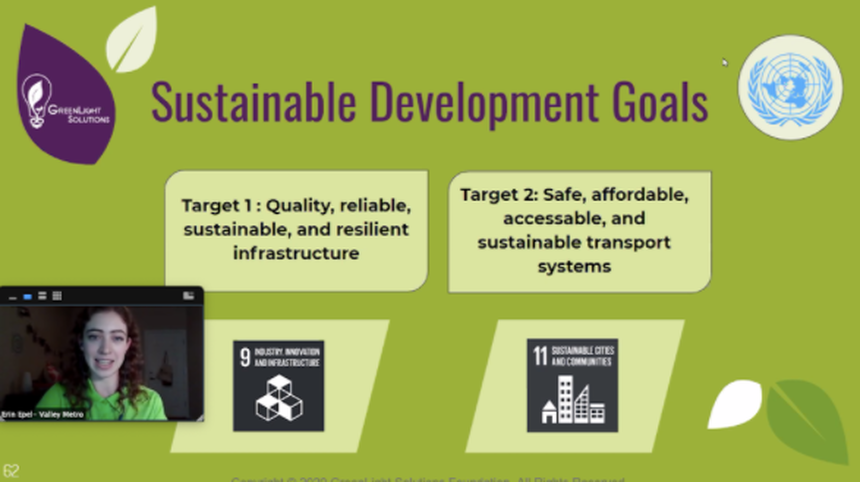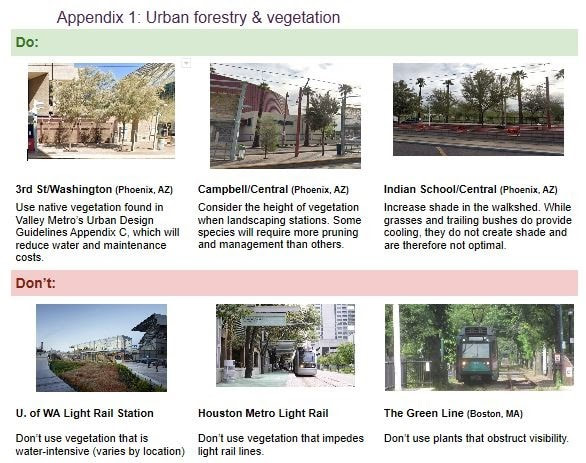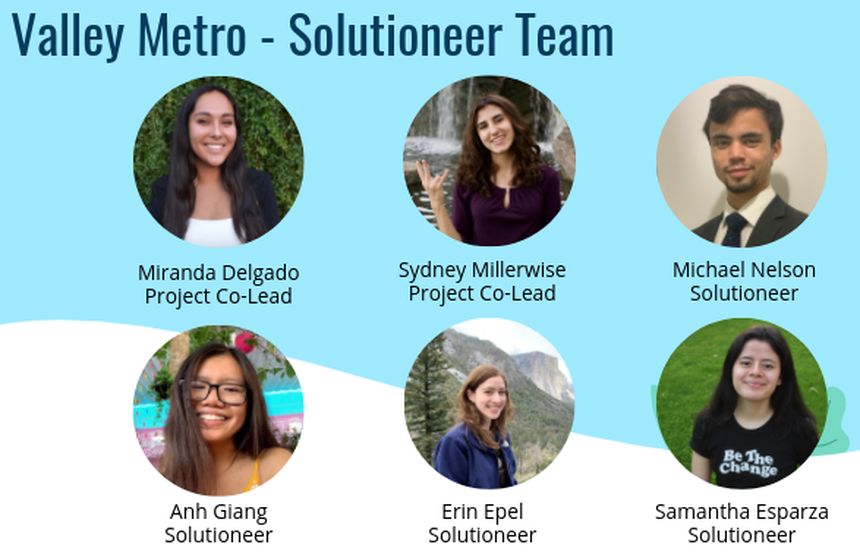|
Climate change poses significant challenges to the Phoenix Valley. Among these challenges are increased flooding, prolonged drought, groundwater depletion, loss of agriculture revenues, and temperature rise; yet extreme heat poses the greatest threat to Phoenix residents. The average nighttime temperature of central Phoenix is roughly 10-15°F hotter than in more rural areas. This phenomena is known as the Urban Heat Island (UHI) effect, where temperatures are heightened by a ‘built’ city environment. For many people, such as public transit riders, this heat is unavoidable. Extreme heat is the leading cause of weather-related mortality in the United States annually, which is why increased shade is a necessity for public transportation in Arizona. This is why the Valley Metro GreenLight Project Team focused on advancing Sustainable Development Goals 9 and 11 for their project.
From these four stations, one station was chosen by Valley Metro and was submitted for the Healthy Urban Environments (HUE) grant. If awarded, the HUE grant would provide funding for critical retrofits. The second memo established best practices and brief guidelines for Valley Metro’s future light rail stops and walksheds. This memo combined past knowledge and discussed different methods to improve Arizona’s light rail systems. This report highlighted various best practices with regard to public art, station structure, technology, and urban forestry, and also reviewed common mistakes that Valley Metro should avoid moving forward. Authors & Project Team: Anh Giang, Erin Epel, Michael Nelson, Miranda Delgado, Samantha Esparza, Sydney Millerwise
0 Comments
Leave a Reply. |
Archives
July 2024
Categories |
|
RECEIVE GREENLIGHT NEWS
|
© GreenLight Solutions. All rights reserved.
|




 RSS Feed
RSS Feed